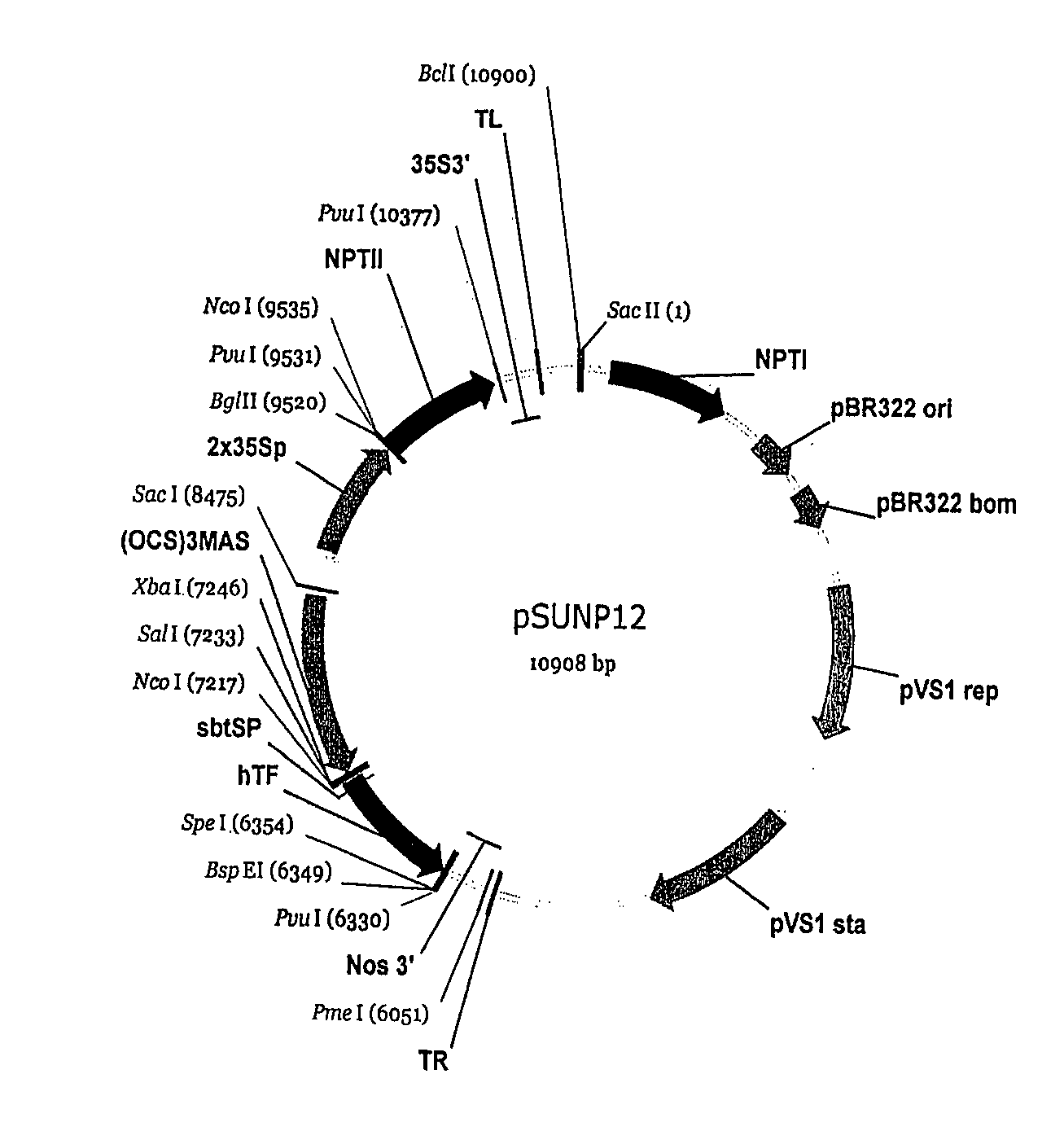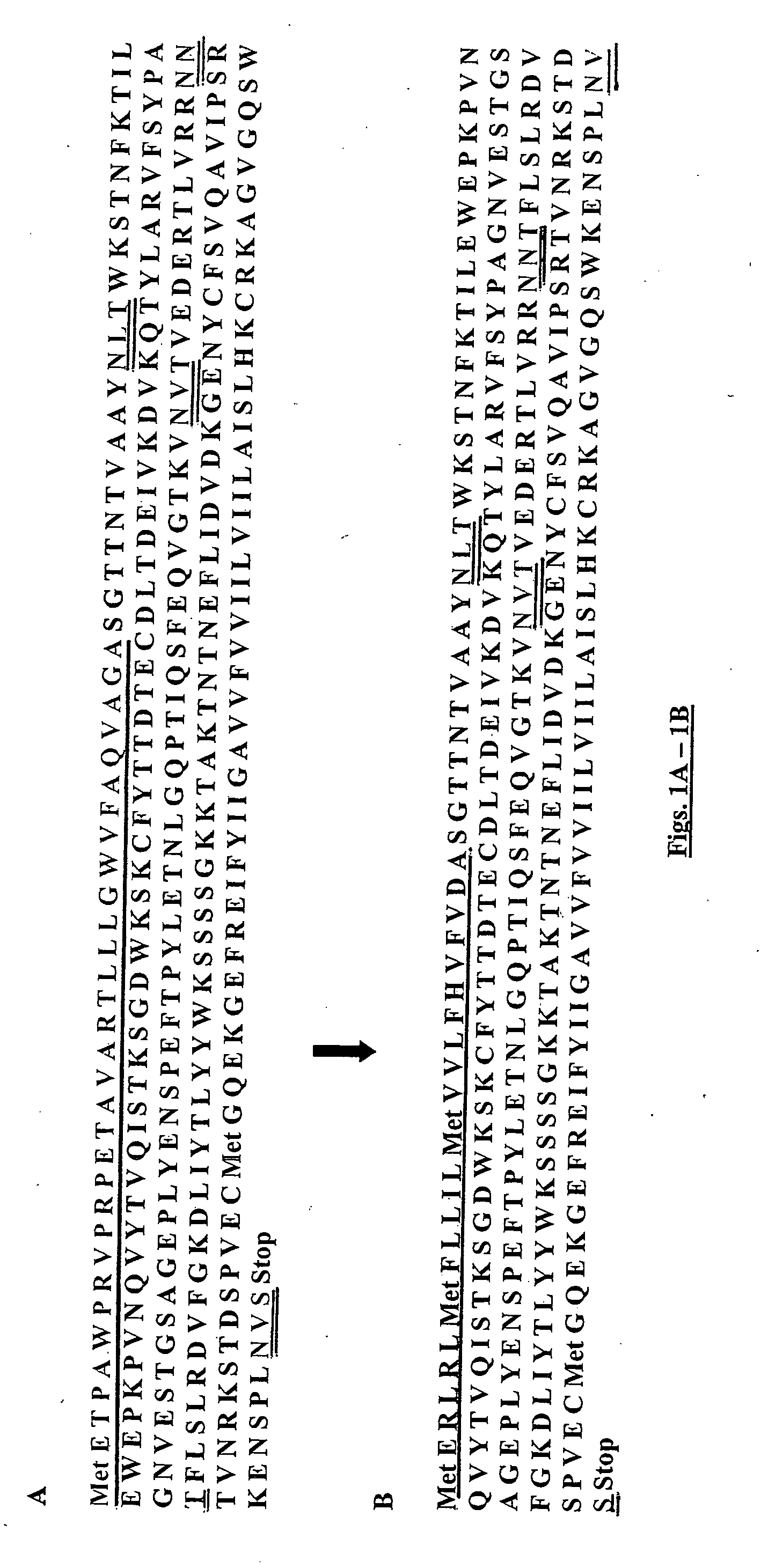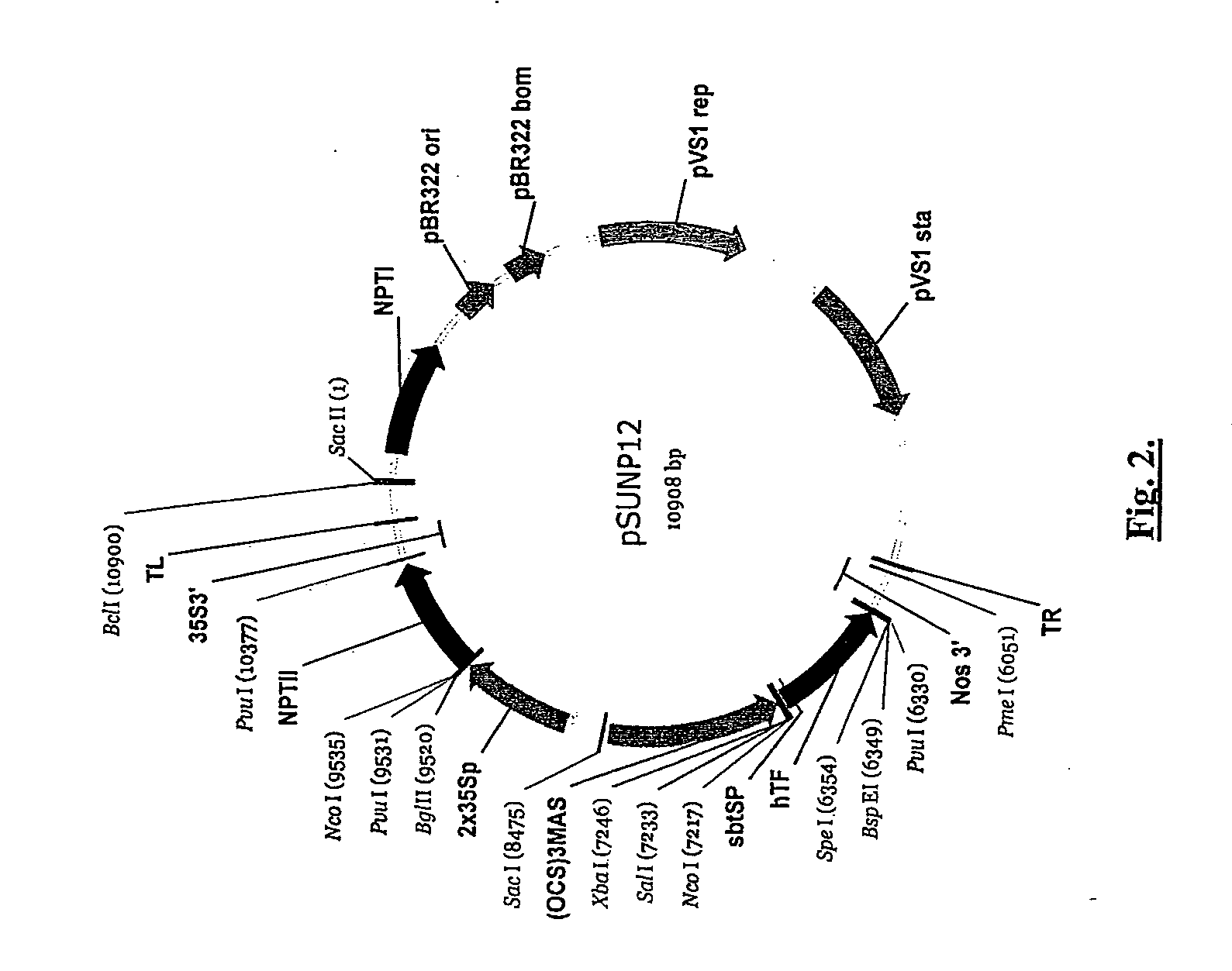Production of tissue factor in plants
a tissue factor and plant technology, applied in the field of plantderived tissue factor production and use, can solve the problems of insufficient material value, inability to efficiently make and use rhtf in many settings, and extra processing steps, and achieve the effect of good activity and substantial lipidation
- Summary
- Abstract
- Description
- Claims
- Application Information
AI Technical Summary
Benefits of technology
Problems solved by technology
Method used
Image
Examples
example 1
Preparation of Agrobacterium Vector Encoding Tissue Factor
[0156] This example describes the method of producing recombinant human tissue factor (rhTF) in plants. The method involves cloning the DNA sequence coding for tissue factor into a plasmid DNA vector that is capable of replication in Escherichia coli and Agrobacterium tumifaciens. This recombinant DNA molecule can be introduced into plants, plant tissues or cells, such that the TF gene is expressed.
Binary Vector Construction
[0157] The binary vector was constructed so as to have a gene encoding full-length (263 aa) rhTF (FIG. 1), which can be used both for transient expression and for stable transformation. In FIG. 2, the map of one binary vector is shown comprising: TR, Nos-3′ terminator (reverse orientation), gene of rhTF (reverse orientation) with tomato subtilase apoplast-targeting signal peptide (Janzik et al., 2000) (reverse orientation), 2,4-D inducible (OCS)3Mas promoter (Gelvin et al., U.S. Pat. No. 5,955,646) (re...
example 2
Preparation of Agrobacterium tumefaciens Suspension
[0159]Agrobacterium tumefaciens strain C58 / C1 carrying the pSUNP12 vector were grown and vacuum-infiltrated into leaves of lettuce according to the procedure of transient expression in lettuce (U.S. Ser. No. 10 / 739,447).
[0160] The Agrobacterium culture with the pSUNP12 binary vector was grown on LB broth supplemented with 5 g / L sucrose, 2 mM MgSO4, 10 mM MES pH 5.6 and 20 μM acetosyringone overnight at 29° C. The ratio of the inoculum used to start the overnight culture to final culture volume was 1:100 and gave a suspension with a final OD600 of about 2.4. The suspension was supplemented with 10 mM MES, pH 5.6, and 200 μM acetosyringone and incubated for 1 hour at 22° C. Before infiltration, 100 μM of 2,4-D and 0.005% Tween 20 were added. Lettuce was vacuum-infiltrated with the Agrobacterium culture and the leaves were treated as described in U.S. Ser. No. 10 / 739,447 and Example 3. Lettuce leaves, transiently expressing rhTF, wer...
example 3
Transformation of Lettuce
Vacuum-Infiltration and Incubation of Treated Lettuce Heads
[0161] 1.25 L of pretreated suspension of Agrobacterium was placed into 2 L glass beaker inside vacuum-dessicator. Whole heads of lettuce were immersed into suspension and held for 20 min under a vacuum (25″ column of water) and then, the vacuum was released rapidly. Lettuce heads were briefly rinsed in water and left for 3-4 days at 22° C. and 16 hours of daylight in boxes with transparent cover on wet paper towels. After incubation, the treated lettuce was homogenized for protein extraction then used for purification of the rhTF as described in Example 4.
PUM
| Property | Measurement | Unit |
|---|---|---|
| Fraction | aaaaa | aaaaa |
| Fraction | aaaaa | aaaaa |
| Fraction | aaaaa | aaaaa |
Abstract
Description
Claims
Application Information
 Login to View More
Login to View More - R&D
- Intellectual Property
- Life Sciences
- Materials
- Tech Scout
- Unparalleled Data Quality
- Higher Quality Content
- 60% Fewer Hallucinations
Browse by: Latest US Patents, China's latest patents, Technical Efficacy Thesaurus, Application Domain, Technology Topic, Popular Technical Reports.
© 2025 PatSnap. All rights reserved.Legal|Privacy policy|Modern Slavery Act Transparency Statement|Sitemap|About US| Contact US: help@patsnap.com



